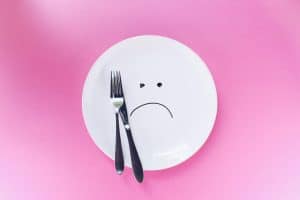BPA Study Finds Different Gut Microbiota’s Response Based on BMI

Children with normal weight seem to have a different gut microbiota response to endocrine disruptors like bisphenol A (BPA) compared to those with overweight or obesity, one study finds. Bisphenol A (BPA), a synthetic chemical used in various plastic products, is known to disrupt hormone functions in the body and may affect human health. The study, published in mSystems, found differences in microbial communities between normal-weight children and those who were overweight or obese after BPA exposure.
Margarita Aguilera, Ph.D., a microbiologist at the University of Granada in Spain, said:
We found that the gut microbial community responds differently to BPA exposure depending on the BMI (body-mass index) of the individual.
Specifically, children with normal weight hosted more diverse bacteria and showed greater resilience to BPA. Research from the University of Granada suggests that BPA exposure can lead to distinct microbial communities in normal-weight children compared to their overweight or obese counterparts.
BPA is increasingly present in human samples, indicating potential accumulation in the body. Moreover, there’s a growing body of evidence linking xenobiotics like BPA to obesity, especially when exposure occurs early in life.
The study aimed to evaluate how BPA affects gut microbiota in relation to childhood obesity and whether certain bacteria could serve as biomarkers for BPA exposure. Fecal samples from 106 children aged 5 to 10 were analyzed, revealing that BPA exposure led to specific microbial changes.
Certain bacterial species, such as Clostridium and Romboutsia, showed resistance to BPA and were positively associated with microbiota richness. On the other hand, other species were inversely correlated with gut diversity, potentially indicating an obesogenic phenotype.
Children with normal weight exhibited a more enriched and connected gut microbiome network compared to those with overweight or obesity, suggesting greater resilience to the effects of BPA. This finding underscores the importance of understanding the relationship between BPA, obesity, and gut microbiota for informing interventions and policies aimed at reducing childhood obesity risk.
Dr. Aguilera said:
We want to raise awareness about the health risks associated with microplastics that enter our bodies, and those that circulate in the environment… It’s crucial for individuals to be mindful of these concerns.
However, the study’s use of 16S rRNA gene sequencing limited taxonomy resolution, and further research is needed to fully elucidate the relationship between BPA-tolerant gut bacteria and obesity. Nonetheless, the findings highlight the need for awareness of the health risks associated with environmental toxins like BPA and microplastics.
Your responses and feedback are welcome!
Source: “Environmental Toxin BPA Affects Gut Microbial Communities in Children,” Pharmacy Times, 3/5/24
Source: “BPA exposure linked to gut microbiota, childhood obesity in new study,” EurikAlert, 3/1/24
“BPA exposure influences gut microbial diversity and childhood obesity risk,” News Medical, 3/1/24
Image by Jonathan Chng on Unsplash










 FAQs and Media Requests:
FAQs and Media Requests: 











